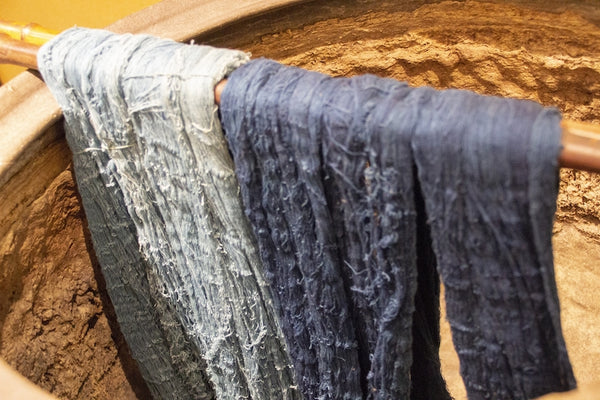Exploring the Properties and Applications of Sulfur Black Dye in Textile Industry
The Significance and Applications of Sulfur Black Dye
Sulfur black dye is a unique and widely-used dyeing agent in the textile industry, renowned for its deep, rich color and excellent fastness properties. This dye has a history that dates back to the mid-19th century and has since become a staple, particularly in dyeing cotton and other cellulosic fibers. Its popularity is attributed to its economic viability, versatility, and environmental considerations compared to some synthetic dyes.
Chemical Composition and Properties
Sulfur black is composed primarily of sulfur and organic compounds, which contribute to its unique properties. The dye is applied to textiles in a reduced form, which allows it to penetrate the fibers efficiently. Upon exposure to air, the dye oxidizes and forms a stable, insoluble compound within the fibers, resulting in a deep black color that is both durable and resistant to washing and light exposure. This oxidation process is crucial, as it ensures that the dye becomes firmly fixed in the textile material, providing longevity that meets the demands of consumer use.
Application in the Textile Industry
The applications of sulfur black dye are extensive. Primarily used in denim and other cotton fabrics, it allows manufacturers to produce rich, dark colors that are both appealing and functional. The textile industry often seeks dyes that can withstand repeated washing and abrasion, and sulfur black achieves this through its remarkable fastness traits. Furthermore, it can be applied in various methods, including continuous dyeing processes and exhaustion dyeing, making it adaptable to different production techniques.
Beyond cotton, sulfur black dye is also used on other fibers, such as linen and rayon. Its ability to bond with various substrates enhances its usability across diverse textile applications, including apparel, home furnishings, and industrial fabrics.
Environmental Considerations
sulfur black dye

One of the significant advantages of using sulfur black dye is its relatively low environmental impact, especially when compared to many synthetic dyes. The production of synthetic dyes often involves petrochemical processes that can generate harmful byproducts and waste. Sulfur black dye, derived from natural sources and formulated to minimize contaminants, presents a more sustainable alternative.
Moreover, advancements in dyeing technology have enhanced the efficiency of sulfur black applications
. Innovations such as closed-loop dyeing systems and improved washing processes help in minimizing water usage and waste generation. Brands committed to sustainable practices often opt for sulfur black dye for its reduced ecological footprint, aligning with consumer demand for environmentally friendly products.Challenges and Future Perspectives
Despite its benefits, sulfur black dye can present challenges in terms of consistency and color matching. Achieving a uniform color across large production runs can be complex, particularly when variations in fiber content or dye application methods occur. Manufacturers must be vigilant in controlling dyeing conditions, including temperature and time, to ensure optimal results.
As the textile industry continues to evolve, the demand for sustainable and high-performance dyes will likely grow. Research into enhancing the qualities of sulfur black dye, such as its solubility and wash fastness, will be crucial for expanding its applications. Interdisciplinary collaborations among chemists, textile engineers, and sustainability experts have the potential to yield innovative solutions that enhance the dye's performance while further reducing environmental impact.
Conclusion
In conclusion, sulfur black dye holds significant value in the textile industry due to its rich color, durability, and environmental advantages. While challenges remain, advancements in technology and an increasing focus on sustainable practices pave the way for its continued use and innovation. As industry players strive to balance aesthetics, performance, and environmental responsibility, sulfur black dye is poised to remain a prominent choice in the dyeing landscape. Its history and ongoing evolution highlight the interplay of chemistry, industry needs, and sustainability in the quest for modern dye solutions.
-
The Timeless Art of Denim Indigo Dye
NewsJul.01,2025
-
The Rise of Sulfur Dyed Denim
NewsJul.01,2025
-
The Rich Revival of the Best Indigo Dye
NewsJul.01,2025
-
The Enduring Strength of Sulphur Black
NewsJul.01,2025
-
The Ancient Art of Chinese Indigo Dye
NewsJul.01,2025
-
Industry Power of Indigo
NewsJul.01,2025
-
Black Sulfur is Leading the Next Wave
NewsJul.01,2025

Sulphur Black
1.Name: sulphur black; Sulfur Black; Sulphur Black 1;
2.Structure formula:
3.Molecule formula: C6H4N2O5
4.CAS No.: 1326-82-5
5.HS code: 32041911
6.Product specification:Appearance:black phosphorus flakes; black liquid

Bromo Indigo; Vat Bromo-Indigo; C.I.Vat Blue 5
1.Name: Bromo indigo; Vat bromo-indigo; C.I.Vat blue 5;
2.Structure formula:
3.Molecule formula: C16H6Br4N2O2
4.CAS No.: 2475-31-2
5.HS code: 3204151000 6.Major usage and instruction: Be mainly used to dye cotton fabrics.

Indigo Blue Vat Blue
1.Name: indigo blue,vat blue 1,
2.Structure formula:
3.Molecule formula: C16H10N2O2
4.. CAS No.: 482-89-3
5.Molecule weight: 262.62
6.HS code: 3204151000
7.Major usage and instruction: Be mainly used to dye cotton fabrics.

